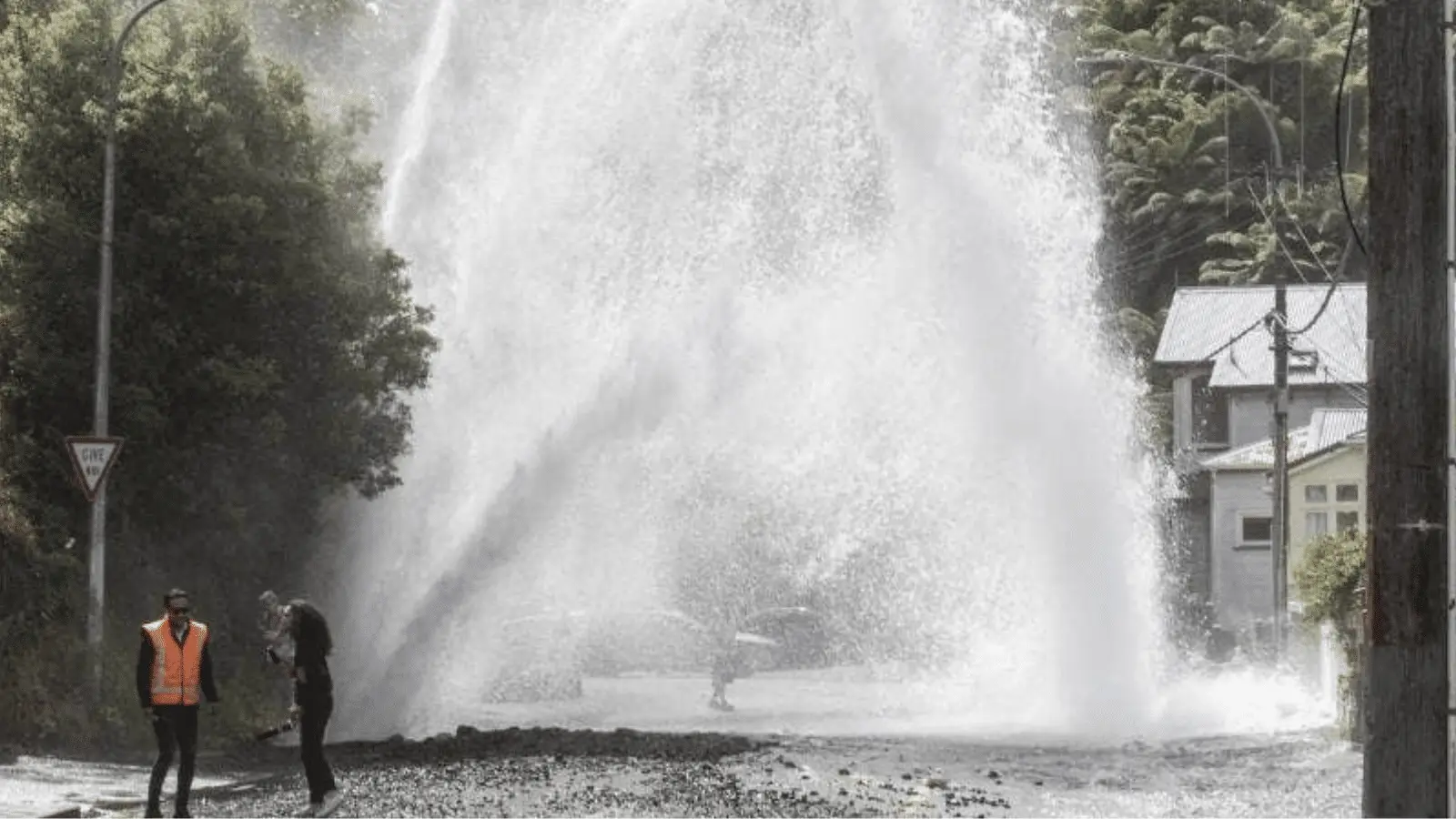Introduction
Summer in Australia and New Zealand presents a unique challenge for water infrastructure, particularly with increasing water main breaks. In this blog post, we delve into the reasons behind these breaks and explore practical strategies such as pipeline condition assessment, pressure transient monitoring, and active leak detection to mitigate these issues.
Why Do Water Main Breaks Occur More in Summer?
- Thermal Expansion: High temperatures cause the ground to dry out and shift in the summer. This movement can place additional stress on water pipelines, especially older ones made of cast iron and ductile iron, commonly found in Australia and New Zealand. These materials, while durable, are less flexible and more prone to cracking under stress.
- Increased Water Demand: Summers are characterised by higher water usage for gardening and filling swimming pools. This increases water pressure and flow rate within the mains, stressing the system, especially in older pipelines.
- Ageing Infrastructure: Many areas in Australia and New Zealand have water systems with ageing infrastructure. Cast and ductile iron pipes, which have been in service for decades, are susceptible to corrosion and degradation, increasing the risk of breaks.
Mitigation Strategies
Active Leak Detection
Active leak detection involves regularly inspecting the water distribution system to identify and repair leaks before they lead to major breaks. This proactive approach uses technologies like acoustic sensors and correlators to detect the sound of water escaping from the pipes, which also helps reduce non-revenue water and operate more efficiently.
Pipeline Condition Assessment
This involves evaluating the current state of the water distribution infrastructure to prioritise maintenance and replacement. Pipeline condition assessment technologies such as Dynamic Response Imaging, electromagnetic inspection and wall thickness measurements are widely used all year round to help water authorities proactively repair, replace and rehabilitate sections of water mains at risk of failure.
Pressure Transient Monitoring
Pressure transients are rapid changes in pipeline pressure caused by operations like pump startups, network operations, or large customer usage profiles. Monitoring these transients helps identify conditions that may lead to pipeline failures, allowing network calming initiatives to be initiated.
Real-Time Pipeline Monitoring
Implementing real-time pipeline monitoring systems allows for immediate detection and response to abnormal conditions in the pipeline network — such as when a burst occurs. This includes monitoring flow rates, pressure transient, and even the chemical composition of the water.
Accelerating Reactive Response to Water Main Breaks: Effective Strategies
In addition to proactive measures to prevent water main breaks, having a rapid and efficient reactive response plan is crucial, especially during the challenging summer months in Australia and New Zealand. Here are some strategies to ensure a faster reactive response to such incidents:
Maintaining a Ready Inventory of Spare Parts
- Stockpile Essential Components: Keeping a sufficient inventory of critical spare parts such as pipes, valves, fittings, and clamps ensures immediate repair availability. This reduces the downtime waiting for parts to arrive. Ensuring you conduct regular inventory audits can help maintain the required stock levels and identify any potential shortages before they become critical.
Flexible Procurement Strategies
- Establishing Relationships with Suppliers: Building solid relationships with multiple suppliers ensures a more reliable and quicker supply chain response when parts are needed urgently. This includes flexible procurement agreements that allow rapid ordering to reduce repair time.
Engaging Specialist Third-Parties for Assistance
- On-call Repair Teams: Contracts with specialist third-party repair teams who can be mobilised quickly in case of excessive breaks can expedite the repair process.
Mobile Repair Units
- Equipped Repair Vehicles: Having dedicated mobile repair units, fully equipped with tools and emergency repair materials, ready to be dispatched can drastically cut down response time. Using GPS technology and routing software, the repair crews nearest the site can be routed to repair the break.
Community Engagement and Communication
- Informing the Public: Keeping the community informed about ongoing repairs and expected timelines through social media and other communication channels can help manage public expectations and reduce disruptions.
Conclusion
With the challenges posed by summer conditions in Australia and New Zealand, especially with ageing infrastructure like cast iron and ductile iron pipes, adopting a proactive approach to pipeline management is essential. Techniques such as active leak detection, pipeline condition assessment, pressure transient monitoring, and real-time pipeline monitoring play a crucial role in reducing water main breaks and ensuring the reliability of water supply systems. These strategies not only enhance the efficiency of water distribution but also contribute to sustainable water management in these regions.
Aqua Analytics is a specialist provider of water network management solutions that help New Zealand and Australian water authorities reduce system losses and prevent water main breaks. Contact us today for a free consultation about how we can assist your team in managing their pipeline network today.


